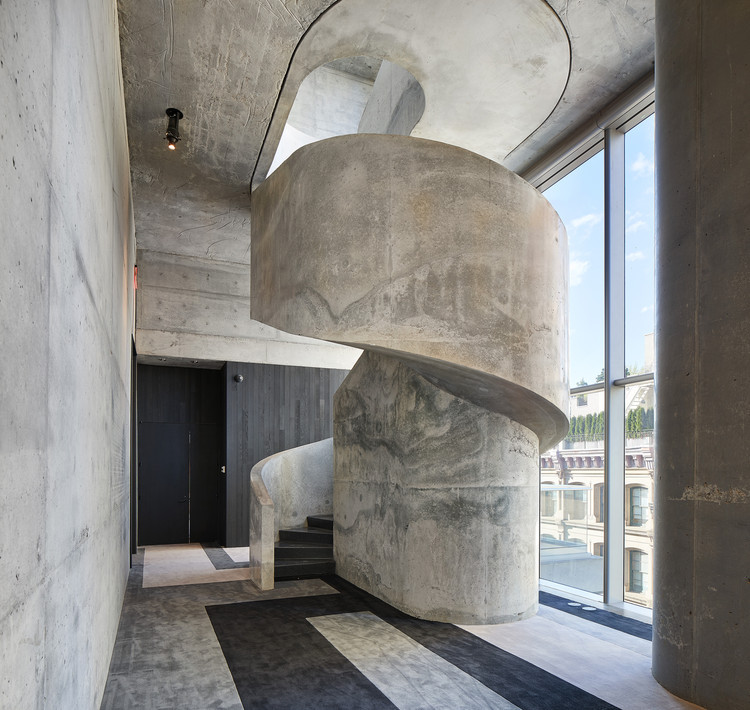RSW Agency New Business Website Series, Pt. 4: Social Proof And Namedropping
Social Proof And Namedropping
Welcome to the 4th installment of our series around agency new business websites, and in this case, social proof and namedropping.
First, let’s talk about one of my favorite sitcom characters, Tahani Al-Jamil.

You don’t need to know much about NBC’s The Good Place to get an idea of what’s going on here. (But if you don’t – go watch it, seriously.)
Most of us are familiar with this trope – the rich socialite who finds a way to slip a celebrity name into every conversation – regardless of context or relevance.
In the case of this character – whose speech is peppered with namedrops – this tic lets others know that she’s well-connected and rich, but the unintended consequence is that it clues us in on her deep insecurity.
Her namedropping is a way of seeking out validation when she feels like her own words, ideas or experiences don’t carry any merit on their own.
They are also absurdly hilarious at times.
So. What does this have to do with Agency New Business?
A lot, actually.
Social proof is just as important as budgetary concerns.
Testimonials can increase landing page conversion by up to 34%
The science doesn’t lie – social proof is important.
Namedropping – as a sales and marketing tactic – works.
We’re social creatures, so we want to follow the crowd and the experts.
We’re far more likely to trust our peers than a salesperson.
As marketers, we know the power of the halo effect: If you associate yourself with an important and well-respected client, some of that prestige is bound to splash onto you.
But, as our favorite socialite illustrates – it’s easy to go too far.
Referencing your important clients might get you a foot in the door, but it needs to be done with a deft hand, lest you undervalue your work.
Two kinds of namedrops
The “namedrop” – AKA social proof – takes on many forms, but there are two I want to talk about specifically – logos and testimonials.
These are bite-sized pieces that strengthen multiple forms of sales content – from your website to sales emails and brochures.
Logos: Sharing your clients’ logos is a great way to grab attention very fast, and bolsters your reputation if you work with well-known or well-respected brands, simply because you’re associated with them.
Testimonials: Testimonials bring a bit of humanity to your work, put names and faces to the logos, and lend credibility to your claims.
Be Selective
You’ve worked with a lot of great clients and you want everyone to know it – but not every logo needs to be highlighted, and not every client needs to publicly sing your praises.
Large, sprawling logo blocks and lists of glowing testimonials often leave me asking “Yes, but what do they do?” simply because there’s very little rhyme or reason to the selection.
Every small company and industry they work with is included.
Instead of throwing everything at the wall and hoping something catches your prospect’s eye, consider using a small, well-curated block.
Highlight the clients that are more recognizable, yes, but also most relevant to your prospects.
Similarly, be thoughtful about who you approach for a testimonial.
People trust and want to hear from their peers – clients of similar rank and experience as them.
If you’re targeting VP’s and directors, try to get the perspective from a person with a similar title.
You’ll also get much more candid and sincere responses from those who worked closely with your team through the process.
Placement is Everything
So now you know which logos and testimonials to use, but where do they serve you best?
Unlike the lovely socialite character desperate for validation, you don’t need to slip a reference to your client list into every conversation.
Some places are more appropriate than others, and some are more effective.
Your homepage: Paired with a solid value proposition, a small selection of testimonials and logos can give a great first impression of what you do, who you do it for, and what it’s like to work with you.
Landing pages: Many clients who play in a wide variety of industries choose to make category-specific landing pages to dive deeper into the details.
This is a great place to splash logos that might not be widely known outside of their niche, but are well respected in the industry.
Likewise, more technical testimonials and “industry speak” can be used here to showcase your familiarity with the space.
Case studies: Logos are often a part of case studies, but testimonials can offer deeper insights into ‘softer’ results like how much time that app you developed saves, how easy your team is to work with, how insightful you are about their industry, and so on.
It adds a human touch to the project.
Blog posts: Tread carefully here.
Frequently referencing clients or client work can easily take blogs over the line from thought leadership to sales content.
If you are going to reference work, try to use them to illustrate your points, rather than being the focus on the post.
Being Authentic and Specific
Vague statements like “Loved working with their team!” and “these guys really know what they’re doing” don’t make good content and are generic enough they can apply to any agency and team.
You want your prospects to get a good idea of the work you do, from your client’s point of view.
Is your team collaborative or independent?
Do you bring decades of experience, or a fresh new perspective?
Are you strategic with an eye for the overall picture, or are you in the trenches getting the work done?
You can say these things about yourself, but a good testimonial says these things for you – and they’re far more credible since they’re coming from outside sources.
To prompt a genuine response, let them know you want a testimonial, but include drill-down questions such as:
- How much time and money did we save you?
- What was working with our team like?
- What was the biggest benefit of working with us?
Get them thinking about their experience with your agency, and what you brought to the table that made their lives easier.
Sometimes – this means you might have to paraphrase their answers, but be sure to collaborate on any edits.
The best testimonials use authentic language and candid speech.
When you publish the testimonial, include their name and preferably a photograph.
Research shows that putting a face to the words makes testimonials more effective and more trustworthy.
Likewise, including their title, company, and nature of your relationship can add an extra level of validity to the testimonial.
Was this your first project with them? Or have you worked with them for over a decade?
Are they senior-level directors, or “on-the-ground” managers? All of these have their place and say different things about your agency and the work you do.
Conclusion
Logo blocks and testimonials are a small but vital part of your agency’s new business plan.
If you don’t have them you’re a new player and not worth talking to.
But if you rely on them too much, you could simultaneously come off as pompous and insecure.
Used right, their effect is subtle.
Instead of taking the spotlight away from your work, they lend it credibility.
Even so, they shouldn’t be an afterthought for your team.
It takes smooth confidence and strategic thinking to utilize these tools well and land yourself in a good place.










